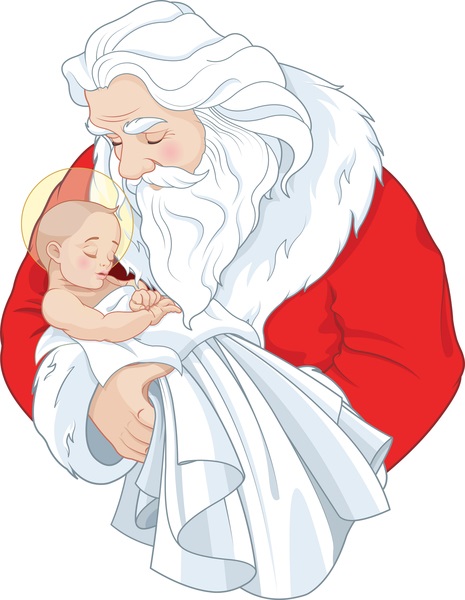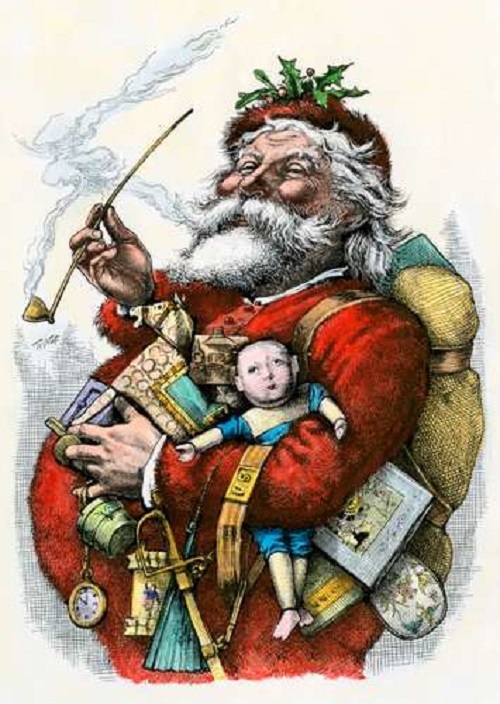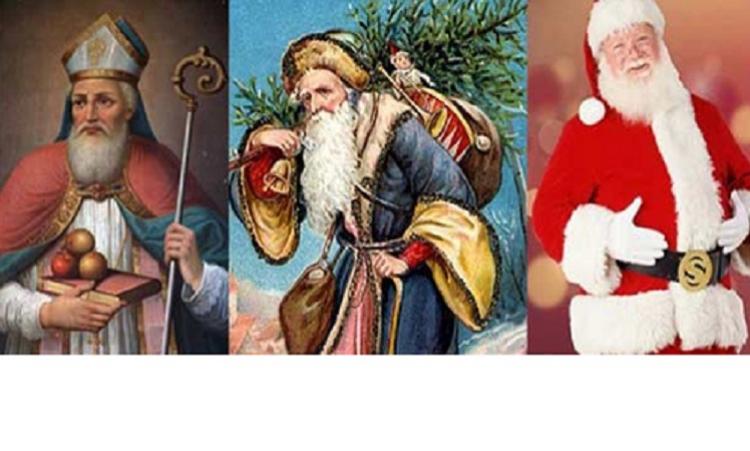How has Santa Claus got to be part of the story of Christmas?

There is no dispute about there being a real St. Nicholas, born in 280 AD in modern day Turkey. The story goes that he saved three poor sisters from being sold into slavery or prostitution by their father by providing them with a dowry so that they could be married. Hence, he was associated with gift giving. He was a popular saint until the Reformation, and saints were no longer honoured. December 6th, the day of his death, is Saint Nicolas Day, and is still celebrated by some.
The Dutch continued to honour Saint Nicholas and the Dutch people who immigrated to New York were celebrating in New York. A 1773 newspaper reported Dutch families gathered to celebrate St. Nicholas Day. He was called Sinter Klaas.
In 1809 Washington Irving referred to St. Nicholas at the patron saint of New York in his book, The History of New York.
By the 1820’s there were ads for gift giving to children with image of Santa Claus, in the U.S.
1822 was when Clement C. Moore wrote the poem. “A Visit from Saint Nicolas/A Night Before Christmas”, for his three daughters. It can readily be conjectured that he drew on many sources for his ideas for this poem.
In 1841 in Philadelphia thousands of children came to see a model of Santa Claus. A ‘real’ one appeared shortly after.
1843, Charles Dickens publishes A Christmas Carol. The illustrations in that book of the ghost of Christmas Present, appearing on Christmas morning, is as a man wearing a fur lined green coat.
1881 Thomas Nast a political cartoonist for Harper’s Weekly, drew the image that we know hold dear - rotund, cheerful man, long white beard, sack of toys, bright red suit trimmed with white fur, lived at a workshop in the North Pole with elves, and his Mrs. Claus.

1902 L. Frank Baum published The Life and Aventures of Santa Claus,This book is credited with helping to solidify the images associated with Santa, such as his reindeer.
1930s Haddon Sundblom's depiction of Santa for The Coca-Cola Company's in their Christmas advertising. There were urban legends that Santa Claus was invented by The Coca-Cola Company or that Santa wears red and white because they are the colors used to promote the Coca-Cola brand.

In 1937, Charles W. Howard established the Charles W. Howard Santa School, the oldest continuously run such school in the world.
There are pagan legends that have similarities to the story of Santa Claus. There is the story of the Wild Hunt, where the god Wodan or Odin, a bearded, old blue-hooded man, riding an eight footed steed, through the midwinter sky, bringing people gifts, during the Yuletide.
Before Santa Claus appeared on the scene, many countries had similar stories.
In 16th century England had Father Christmas. He was a large man in green or scarlet robes lined with fur, bringing peace, joy, good food and wine. Thanks to Martin Luther, England stopped acknowledging the feast day of Saint Nicholas on 6 December, Father Christmas celebration was moved to 25 December to coincide with Christmas Day.
In Germany and Switzerland Christkind or Kris Kringle delivers presents. Christkind is an angel-like figure often accompanied by St. Nicholas on his holiday missions.
In Scandinavia, a jolly elf named Jultomten delivers gifts in a sleigh drawn by goats.
Père Noël is responsible for filling the shoes of French children.
In Russia, they have the tale of Babouschka, an old lady, who was to have purposely given the wise men wrong directions to Bethlehem so that they couldn’t find Jesus. To this day, on January 5, Babouschka visits Russian children leaving gifts at their bedsides in the hope that one of them is the baby Jesus and she will be forgiven.
In Italy, La Befana, a kindly witch, rides a broomstick down the chimneys of Italian homes to deliver toys into the stockings of lucky children.
I expect there are other countries with other tales. Just as there are accounts of his home being in almost every Nordic country and Canada and the U.S.
2008, Jason Kenney, then Canada's minister of Citizenship, Immigration and Multiculturalism, awarded Canadian citizenship status to Santa Claus.
Leaving Santa milk and cookies is more of a American and Canadian tradition. In Ireland he’d be left a Guinness, in Australia some sherry, and in Denmark, Norway and Sweden he is left rice porridge.
How do you view Santa? Does he represent materialism and commercialism or joy and giving? What will he become?
Covid-19 has paused some of his commercial presence with no mall appearances, but he is coming this year. Santa has already received his vaccine.









